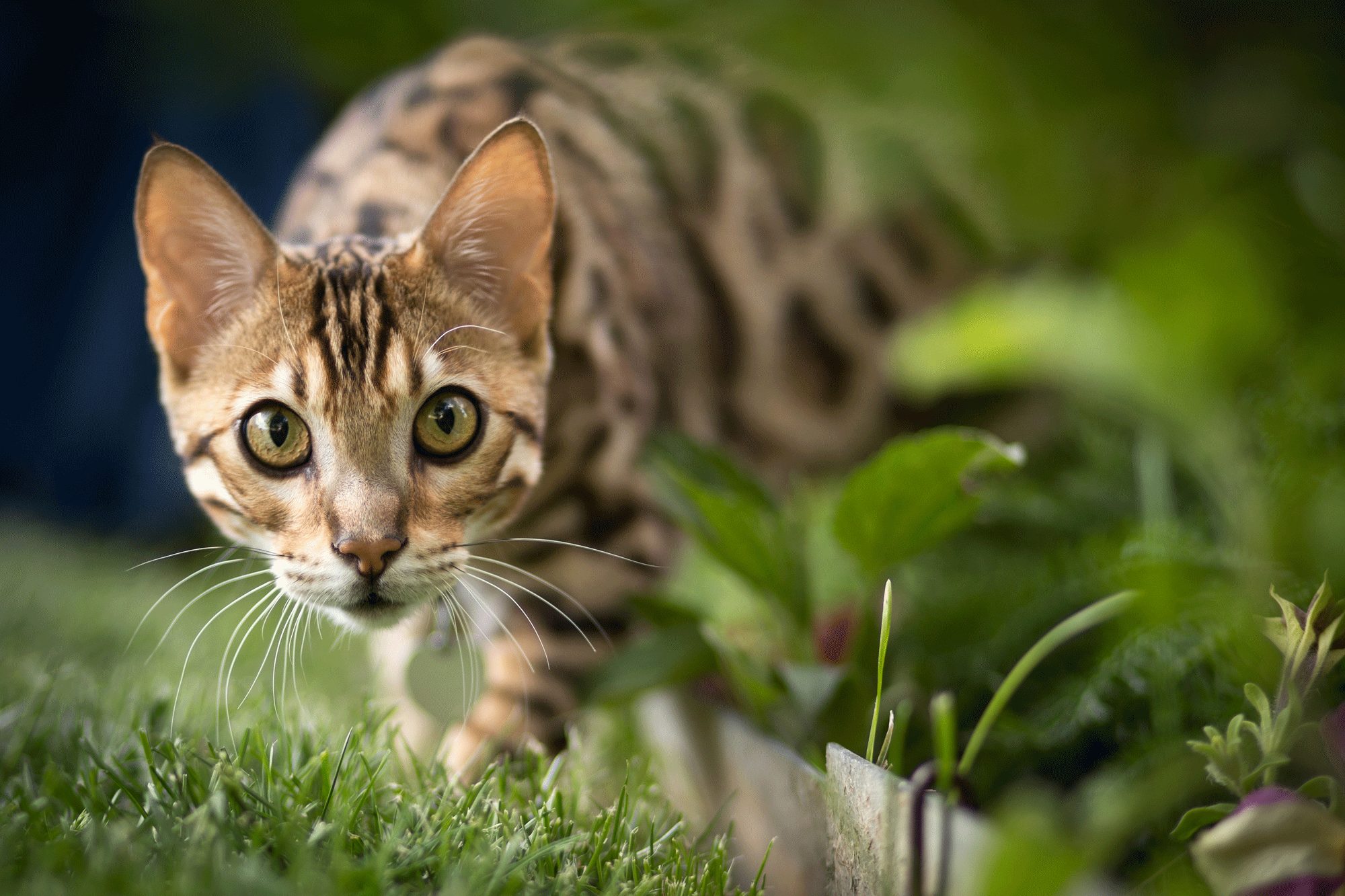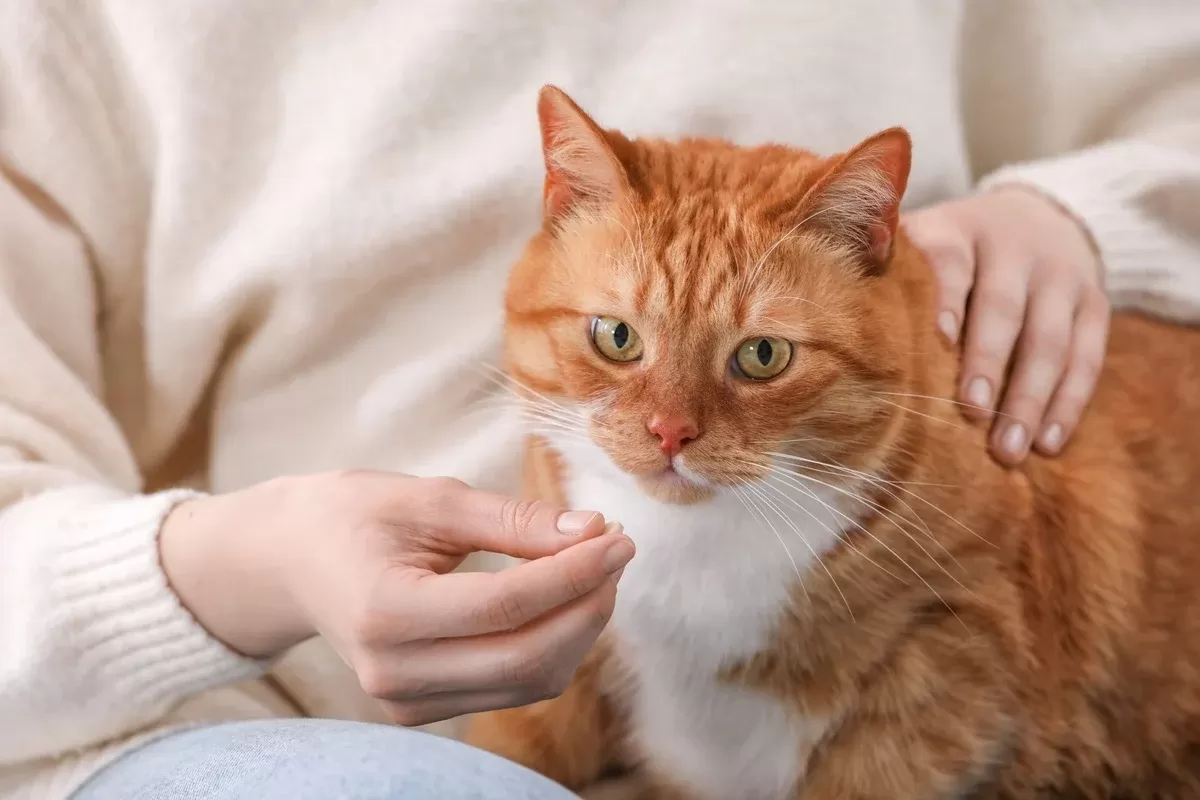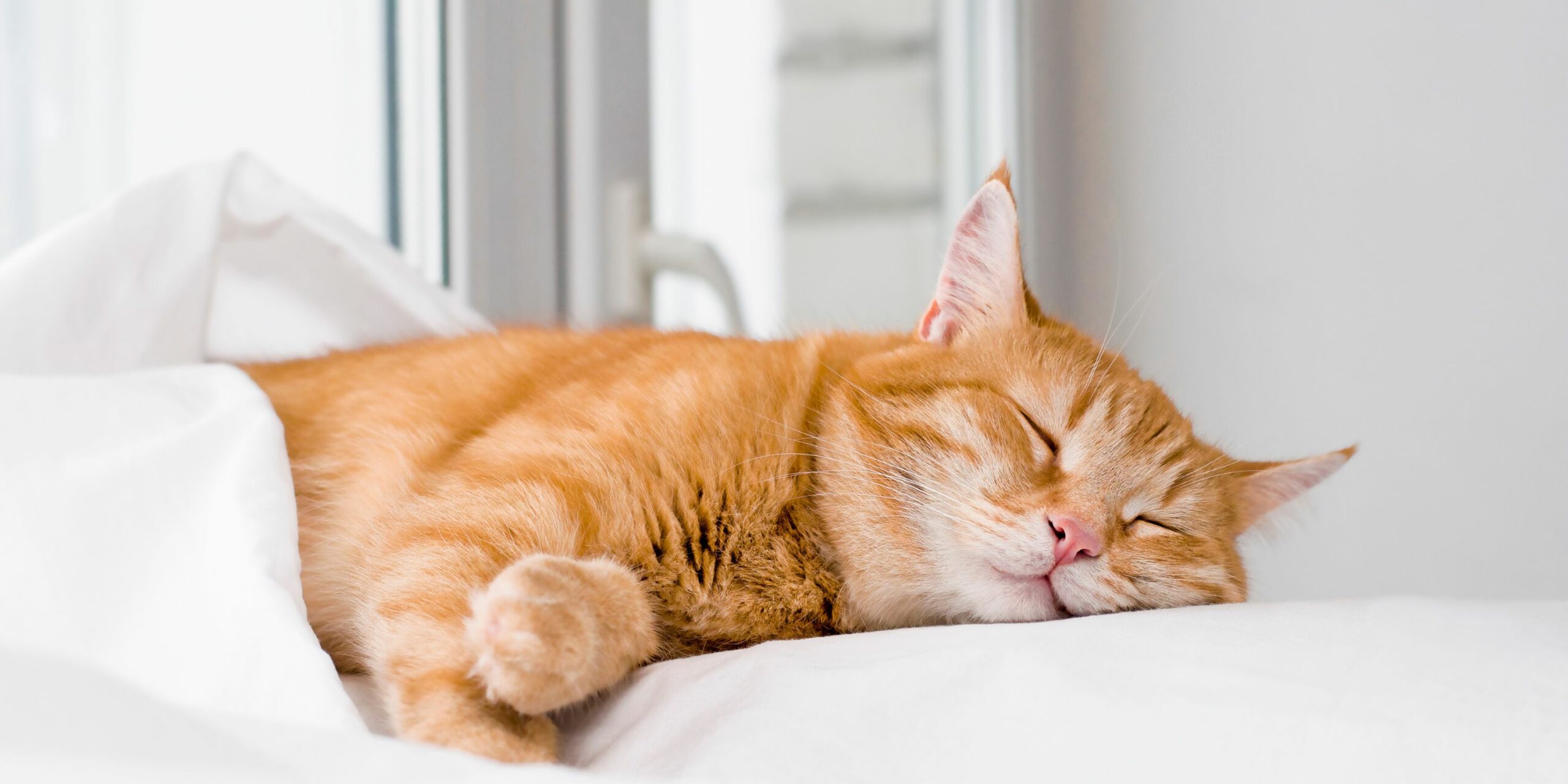Do Cats Experience Guilt or Shame?
The Science Behind Feline Emotions

The age-old question of whether cats experience guilt or shame has puzzled many cat owners and animal behaviorists for years. While humans have a complex emotional spectrum that includes feelings of guilt, shame, and regret, it’s essential to understand if our feline friends possess similar emotional capacities.
Cats are highly emotive animals that communicate primarily through body language and vocalizations. They exhibit behaviors that resemble human emotions such as happiness, sadness, fear, anger, and even affection. However, the question remains whether these emotions are equivalent to guilt or shame in humans or if they have a distinct feline emotional experience.
Research suggests that cats do not possess the cognitive abilities necessary to understand complex moral dilemmas or exhibit remorseful behavior typically associated with human guilt. Studies on canine behavior, which is often compared to feline behavior due to their similar brain structures and social behaviors, demonstrate that dogs exhibit more pronounced signs of guilt in response to disobedience.
While cats may appear “guilty” by displaying certain behaviors like hanging their heads or avoiding eye contact when confronted with misbehavior, this can be attributed to anxiety rather than a sense of guilt. This reaction is more akin to a conditioned response, where the cat associates the human’s scolding or punishment with a negative outcome.
Shame, on the other hand, is an even more complex emotion that involves self-awareness and social evaluation. Shame often arises from recognizing one’s own wrongdoing and being judged by others. Since cats do not possess a sophisticated understanding of social norms or the ability to recognize themselves as individuals within those norms, it’s unlikely they experience shame in the same way humans do.
It’s essential to remember that feline emotions are unique to their species and may not be directly comparable to human emotions. Rather than labeling our cats as guilty or ashamed, we should focus on understanding the emotional experiences specific to their evolutionary pressures, social structures, and brain chemistry.
Cats do exhibit behaviors that resemble emotional regulation and self-soothing techniques when they’re distressed or upset. These behaviors can include grooming, paw-sucking, or attempting to find a secure hiding spot. While these responses are crucial for maintaining emotional balance in felines, they don’t necessarily equate to human-like guilt or shame.
Ultimately, the complexity of feline emotions remains an area of ongoing research and debate within animal cognition and behavioral sciences. It’s clear that cats experience a rich range of emotions, but whether these emotions align with those experienced by humans is still an open question.
In conclusion, while it’s possible for our cats to display behaviors that resemble human-like guilt or shame in certain situations, these responses should not be interpreted as equivalent emotional experiences. Rather than anthropomorphizing feline behavior, we should continue exploring the intricacies of their unique emotional lives and acknowledge the cognitive and social differences between humans and animals.
Studies on cat behavior suggest that cats exhibit behaviors similar to guilt, such as lowering their ears or tail, but it may not necessarily mean they’re experiencing emotions in the same way as humans.
Cats have long been known for their unique personalities and behaviors, but do they experience emotions like guilt or shame? While we can’t directly ask a cat how it feels, researchers have been studying feline behavior to better understand their emotional lives.
Some studies suggest that cats exhibit behaviors similar to guilt, such as lowering their ears or tail, or even avoiding eye contact with their owners. These behaviors are often interpreted as a form of “guilt” or “shame,” but is this really the case? Or could there be another explanation for these actions?
One possibility is that cats are simply responding to negative reinforcement or punishment. If a cat has been scolded or punished for misbehaving, it may learn to associate its behavior with unpleasant consequences and try to avoid repeating it in the future. In this sense, the cat’s avoidance of eye contact or lowered ears could be seen as a learned response rather than an emotional one.
Another factor that may influence feline behavior is social learning theory. Cats are highly social animals and often learn by observing and imitating their owners’ actions. If a cat sees its owner scolding or punishing it, it may pick up on this cue and try to avoid similar situations in the future. Again, this could be seen as a learned response rather than an emotional one.
So, do cats experience guilt or shame? While they may exhibit behaviors that resemble these emotions, it’s unlikely that they are experiencing them in the same way as humans. Cats live in a different emotional world, with their own unique experiences and motivations.
It’s also worth noting that research on animal behavior is complex and multi-faceted. Different species have distinct cognitive and emotional profiles, and what may be true for one species may not be true for another. In the case of cats, it’s possible that they experience emotions related to guilt or shame, but these emotions would likely be very different from those experienced by humans.
One thing is certain, however: while we can’t directly experience the world as a cat does, studying their behavior and cognition can provide valuable insights into their emotional lives. By exploring the complex and often subtle behaviors of cats, researchers can gain a deeper understanding of animal emotions and how they relate to human experiences.
In conclusion, while cats may exhibit behaviors similar to guilt or shame, it’s unlikely that they experience these emotions in the same way as humans. However, this doesn’t mean that cats don’t feel emotions – rather, their emotional lives are shaped by their unique cognitive and social profiles. By studying feline behavior and cognition, we can gain a deeper appreciation for the complex and fascinating world of animal emotions.
Cognitive Development and Social Learning
Cats have often been observed engaging in behaviors that resemble guilt or shame, such as lowering their ears, tail tucking, and avoiding eye contact. However, whether these actions are indicative of genuine emotional states or simply learned behaviors is a topic of debate among animal behaviorists and ethologists.
From a cognitive development perspective, cats, like other animals, undergo significant changes in brain structure and function as they mature from kittens to adult felines. The development of the feline brain’s limbic system, which regulates emotions such as fear, anxiety, and attachment, is critical for understanding their emotional lives.
Studies have shown that kittens exhibit social learning behaviors from an early age, including observing and imitating the actions of their mothers and other adult cats. This suggests that felines are capable of complex social cognition and may develop a sense of right and wrong based on learned norms and expectations within their social groups.
However, whether this capacity for social learning translates to feelings of guilt or shame in the same way it does in humans is unclear. Some researchers argue that cats may experience what they term “guilt-like” behaviors as a result of associative learning, where they learn to associate certain actions with punishment or negative reinforcement.
For example, if a cat consistently receives attention and treats when it exhibits desired behaviors but ignores undesirable ones, the cat may develop an association between certain actions (or lack thereof) and outcomes. This can lead to what appears to be guilt-like behavior in response to those undesired behaviors, even if the cat does not genuinely feel remorseful.
On the other hand, some researchers suggest that cats may experience emotional states similar to shame or guilt as a result of their social nature and attachment to their human caregivers. For instance, when a cat is separated from its owner and exhibits signs of distress (such as meowing, pacing, or restlessness), it could be argued that the cat experiences feelings akin to anxiety or even shame related to being separated.
In conclusion, while cats’ behaviors can resemble guilt or shame, it remains uncertain whether these actions are indicative of genuine emotional states. The cognitive development and social learning aspects of feline behavior suggest a capacity for complex emotions, but more research is needed to determine the extent to which cats experience shame, guilt, or other emotional states.
The development of cognitive abilities in cats, particularly problemsolving skills and memory, is welldocumented. However, its relationship to emotional states remains unclear.

The question of whether cats experience guilt or shame is a complex one that has sparked debate among animal behaviorists and cognitive scientists. While we can’t directly ask a cat how it feels, observations of their behavior in various situations provide some insights into their emotional states.
Research on the development of cognitive abilities in cats suggests that they possess impressive problem-solving skills and memory. For example, studies have shown that domestic cats are capable of learning from experience and adapting to new situations. However, the relationship between these cognitive abilities and emotional states remains unclear.
Guilt is often defined as a feeling of remorse or regret for something one has done wrong. In humans, guilt can manifest in various ways, such as avoiding or confessing to past mistakes. To determine whether cats experience guilt in a similar way, we need to look at their behavior when they’ve committed an “error” or broken a rule.
One study published in the journal Animal Behaviour found that domestic cats exhibited signs of anxiety and stress when their owners scolded them for misbehaving. This reaction could be interpreted as a form of guilt, but it’s essential to distinguish between genuine remorse and mere reactivity to punishment.
The same study suggested that cats may exhibit “pro-social” behaviors such as rubbing against or purring at their owners in an attempt to appease them after misbehaving. While these actions could be seen as a form of guilt, it’s also possible that they’re simply driven by instinctual motivations like seeking comfort and affection.
Shame is often described as a more intense and debilitating emotion than guilt, characterized by feelings of worthlessness and self-blame. Research on shame in humans has shown that it can lead to decreased motivation, depression, and social withdrawal. To determine whether cats experience shame, we need to look for similar patterns of behavior.
Unfortunately, there’s limited research on the topic of shame in animals, including cats. However, some studies suggest that animals may exhibit behaviors that resemble self-blame or self-avoidance when they’ve committed a transgression. For example, a study on chimpanzees found that individuals who had committed an “error” would often avoid interacting with their group members for extended periods of time.
While these findings are intriguing, it’s essential to note that the concept of shame as we understand it in humans may not directly translate to non-human animals like cats. The cognitive and emotional landscapes of different species can vary significantly, and it’s possible that what we perceive as guilt or shame in a cat may be driven by fundamentally different motivations and processes.
In conclusion, while research suggests that cats may exhibit behaviors that resemble guilt and shame, the nature and significance of these emotions remain unclear. Further investigation into the cognitive and emotional lives of domestic cats is needed to better understand their complex relationships with humans and their environment.
Understanding Feline Emotional Expression
A Multifaceted Approach
Feline emotional expression is a complex and multifaceted topic that has garnered significant attention from animal behaviorists, psychologists, and pet owners alike. Understanding the emotional landscape of our feline companions is crucial for building strong relationships and providing optimal care.
One of the most intriguing aspects of cat behavior is their ability to express emotions through various forms of communication. While we often attribute human emotions like guilt or shame to cats, research suggests that their emotional repertoire may be quite different from ours.
Cats are known for their stoic demeanor, which can sometimes lead to misinterpretation of their emotional states. However, recent studies have revealed that cats possess a range of subtle behavioral cues that convey complex emotions such as anxiety, fear, and even affection.
One key area of research has focused on understanding the role of facial expression in feline emotion recognition. While we might expect a “guilty” or “ashamed” look from our cat, their faces do not necessarily exhibit these types of expressions. Instead, cats display more subtle changes in whisker orientation and ear position to convey emotional states.
Another area of investigation has explored the role of vocalizations in feline communication. While we often associate meowing with “talking,” research suggests that meows can actually serve as a form of emotional expression, conveying distress, anxiety, or even excitement.
Cats also communicate through body language and postural adjustments. A tense posture or an avoidance response might indicate anxiety or fear in cats, while relaxed postures often signal contentment and trust.
Furthermore, recent studies have begun to investigate the role of dopamine in feline emotional experience. Dopamine is a neurotransmitter associated with pleasure and reward processing in humans and other animals, but its function in cat behavior remains poorly understood.
The discovery that cats may experience dopamine-related emotions has sparked debate among researchers regarding the nature of their emotional lives. Some argue that these findings indicate a more complex and nuanced emotional experience than previously thought, while others remain skeptical about attributing human-like emotions to non-human animals.
In conclusion, understanding feline emotional expression requires a multifaceted approach that incorporates various forms of communication and behavioral research. By shedding light on the complexities of cat emotionality, we can better appreciate their unique emotional experiences and deepen our connections with these fascinating creatures.
Cats display various emotions, including fear, anger, and affection. While these may not be the same as human experiences of guilt or shame, researchers emphasize understanding their emotional repertoire rather than anthropomorphizing it.
Cats are often misunderstood as being aloof and emotionless creatures, but research suggests that they actually exhibit a wide range of emotions. While their emotional expressions may differ from those of humans, it’s essential to understand and recognize these feelings to build stronger bonds with our feline companions.
One way to approach this is by looking at the various body language cues displayed by cats. For instance, when a cat feels fearful or anxious, they may exhibit behaviors such as tail tucking, ear flattening, or increased pacing. These signs indicate that the cat is in a state of heightened alertness and is attempting to cope with their environment.
On the other hand, cats often display affectionate behavior towards their owners, such as rubbing against legs, purring, or kneading with their paws. These actions are clear indicators of comfort and trust, suggesting that the cat feels safe enough to express its emotions openly.
In terms of guilt or shame, these complex human emotions do not seem to be directly translatable to feline experience. However, researchers have observed that cats can exhibit behaviors that resemble regret or apology, such as avoiding eye contact or withdrawing after engaging in unwanted behavior. This does not necessarily equate to guilt or shame but may indicate that the cat is aware of its own actions and attempting to repair a damaged relationship.
Understanding feline emotional expression is crucial for developing effective communication strategies with our pets. By recognizing their emotions and responding appropriately, we can strengthen our bond and create a more harmonious living environment. It’s essential to remember that while cats may not experience guilt or shame in the same way as humans, they are still capable of complex emotional states that require empathy and understanding.
Moreover, recognizing feline emotions can also help us identify potential behavioral issues before they escalate into more severe problems. By addressing these issues early on, we can take preventative measures to ensure our pets live happy, healthy lives free from stress and anxiety.
In conclusion, while cats may not feel guilt or shame in the same way as humans, understanding their emotional repertoire is essential for building a deeper connection with them. By recognizing their emotions and responding appropriately, we can strengthen our bond, create a more harmonious living environment, and provide the best possible care for our feline friends.
The Role of Context in Feline Behavior
Environmental Influences on Cat Behavior
The role of context in feline behavior cannot be overstated. As a species that has adapted to survive in various environments, cats have developed complex behaviors that are influenced by their surroundings. In the context of the article “Do Cats Feel Guilt or Shame?”, it is essential to consider how environmental factors shape cat behavior and emotions.
Environmental influences on cat behavior can be broadly categorized into physical and social contexts. The physical environment encompasses the spatial layout, lighting, temperature, and noise levels within a given space. For example, a high-traffic area may cause a cat to feel anxious or stressed due to the loud noises and increased human activity.
Cats have an innate tendency to establish territories and defend their resources. In multi-cat households, environmental factors can contribute to conflicts between cats. For instance, limited food or water sources, lack of vertical space, or inadequate litter boxes may lead to competition and aggression among felines. Similarly, outdoor environments can pose significant threats to a cat’s safety, such as traffic risks, predator encounters, or exposure to diseases.
Social context also plays a crucial role in shaping cat behavior. Social interactions with humans and other animals can elicit a range of responses in cats, from affectionate behavior to fear-based avoidance. Domestication has altered the social dynamics between humans and cats, as cats have become increasingly reliant on humans for food, shelter, and companionship.
Cats may exhibit guilt or shame-like behaviors in response to changes in their environment or social interactions. For example, a cat that has been caught engaging in undesirable behavior (e.g., scratching furniture) may appear contrite or submissive when confronted by its human caregiver. However, it is essential to distinguish between guilt and other emotions, such as fear or submission, which can masquerade as shame-like behaviors.
The ability of cats to exhibit complex social behaviors and adapt to changing environments underscores the importance of considering contextual influences on feline behavior. By taking into account the physical and social contexts in which a cat lives, we can better understand their emotional experiences and respond in ways that promote positive outcomes for both humans and animals.
Ultimately, recognizing the role of context in feline behavior challenges us to reevaluate our assumptions about animal emotions and cognition. Rather than attributing human-like qualities to cats, we should focus on understanding their unique behavioral profiles and emotional responses within specific contexts. By doing so, we can foster more compassionate and informed relationships between humans and animals.
It is also essential to note that context influences not only cat behavior but also our own perception of it. Our cultural background, personal experiences, and individual biases can all impact how we interpret feline behavior and attribute meaning to their actions. This highlights the need for a nuanced approach to understanding animal emotions and behaviors, one that takes into account both the external environment and the internal subjective experience of animals.
Factors like social status within a multicat household or exposure to different environments can significantly impact feline behavior, potentially leading to changes that may be perceived as guilt or shame.

The role of context in feline behavior is a complex and multifaceted topic that can significantly impact our understanding of cat emotions, including guilt and shame. It’s essential to consider various factors, such as social status within a multi-cat household, exposure to different environments, and individual experiences, to accurately assess feline behavior.
For instance, in a multi-cat household, cats often establish a hierarchy based on dominance and submission. A cat’s position within this hierarchy can influence their behavior, leading some to exhibit what appears to be guilt or shame. For example, if a dominant cat is present when a subordinate cat commits an “offense,” the subordinate cat may avoid interacting with the dominant cat as a form of self-preservation, potentially leading to behaviors that are misinterpreted as guilt.
Exposure to different environments can also play a significant role in shaping feline behavior. For example, cats living in urban areas may encounter more stressors than those living in rural areas, such as increased noise pollution and altered food availability. This can lead to changes in their behavior, including increased anxiety or avoidance behaviors that might be perceived as guilt or shame.
Another critical factor is individual experience. Each cat has a unique history of exposure to various stimuli, which can shape their behavior and emotional responses. For example, a cat that has experienced trauma, such as being abandoned or separated from its mother too early, may exhibit behaviors that resemble guilt or shame in response to stressful situations.
It’s also essential to recognize that feline behavior is often shaped by evolutionary pressures and instincts. For example, cats are natural predators, and their behavior is influenced by their hunting instincts. When a cat exhibits what appears to be guilt or shame after “committing” an offense, such as knocking over a plant, it may simply be responding to the consequences of its actions from a survival perspective.
In conclusion, the context in which feline behavior occurs plays a crucial role in understanding whether cats experience emotions like guilt and shame. By considering factors such as social status, exposure to environments, individual experiences, and evolutionary pressures, we can better appreciate the complexities of feline behavior and avoid misinterpreting natural responses as emotional states.
- Best Lusha Alternatives for 2025 - April 19, 2025
- Best Overloop Alternatives for 2025 - April 19, 2025
- Best Snov.io Alternatives for 2025 - April 18, 2025



